#semyon timoshenko
Text

"RUSS INFANTRY AMBUSH SOLID WALL OF TANKS DESTROY 71 WITH FIRE," Toronto Star. May 20, 1942. Page 1.
----
Timoshenko's Army Reports Important New Gains in Kharkov
Battle - Germans Drive to South to Ease Soviet Pressure
----
SOVIET A.A. GUNNER KULIER AND 8TH VICTIM
---
Moscow, May 20 - Thousands of tanks and hundreds of thousands of men fought in an infernal cauldron of destruction before Kharkov today. The German high command was throwing new masses of machines and men into the battle in a vain attempt to stop the Russian advance. Tank fought tank and man fought man in such a tangle that planes, engaged in a war of their own over the smoke-clouded front, could not intervene.
The Moscow radio said Hitler had hurled every available tank in the battle which blazed into new fury at strategic points along the whole 1,800-mile Russian front. Field Marshal Fedor von Bock's German forces were reported "in flight" along the 100-mile front before Kharkov.
In one sector German tanks attacked in a solid wall against the Russian centre and flanks, Russian infantrymen, holding their fire, took the shock of the attack and, from a thousand foxholes, leaped out with hand grenades.
#world war ii#eastern front#semyon timoshenko#second battle of kharkov#counter-offensive#kharkiv#soviet union#red army#Вели́кая Оте́чественная война́#russian front#aa guns#anti aircraft gunners#axis vs allies
1 note
·
View note
Text

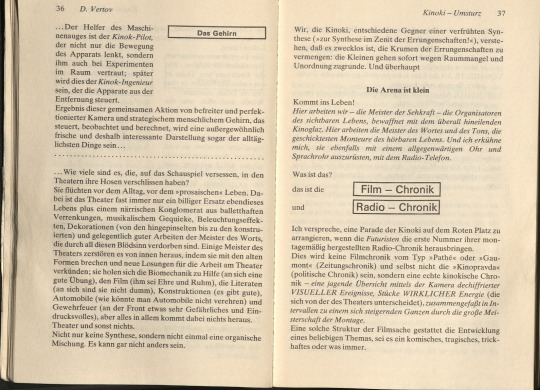
rbb 24 inforadio, radio recordings 2023
#texte zur theorie des films#reclam#stuttgart#1979#boris m. ejchenbaum#probleme der filmstilistik#s. 100 - 140#s. 123#semyon timoshenko#dziga vertov#kinoki - umsturz#s. 24 - 38#film - chronik#radio - chronik#radio recordings#books
0 notes
Text
1942 – Second Battle of Kharkov
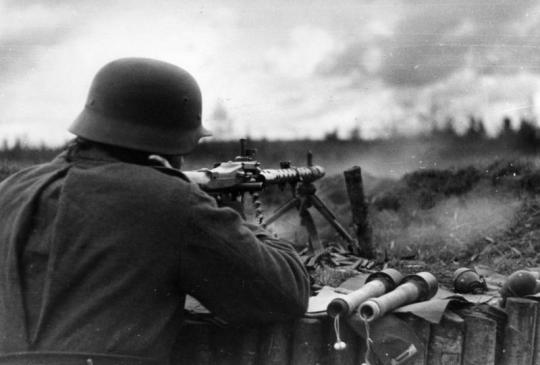
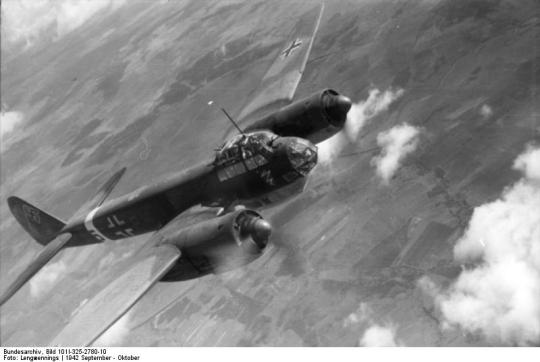
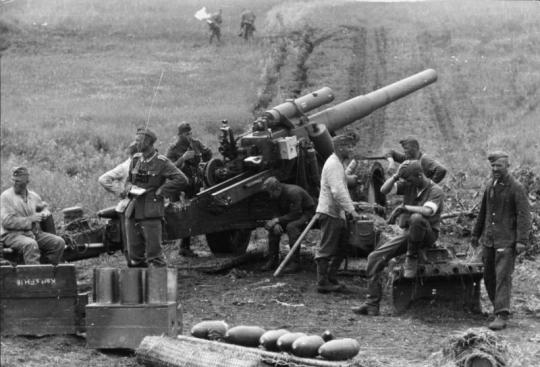





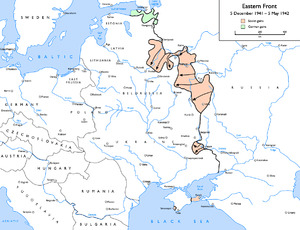
In eastern Ukraine, Red Army forces under Marshal Semyon Timoshenko launch a major offensive from the Izium bridgehead, only to be encircled and destroyed by the troops of Army Group South two weeks later.
#May.12.1942#Second Battle of Kharkov#eastern Ukraine#Eastern Front#German-Soviet war#World War II#history today
4 notes
·
View notes
Text
Events 5.12 (after 1900)
1926 – The Italian-built airship Norge becomes the first vessel to fly over the North Pole.
1926 – The 1926 United Kingdom general strike ends.
1932 – Ten weeks after his abduction, Charles Jr., the infant son of Charles Lindbergh, is found dead near Hopewell, New Jersey, just a few miles from the Lindberghs' home.
1933 – The Agricultural Adjustment Act, which restricts agricultural production through government purchase of livestock for slaughter and paying subsidies to farmers when they remove land from planting, is signed into law by President Franklin D. Roosevelt.
1933 – President Roosevelt signs legislation creating the Federal Emergency Relief Administration, the predecessor of the Federal Emergency Management Agency.
1937 – The Duke and Duchess of York are crowned as King George VI and Queen Elizabeth of the United Kingdom in Westminster Abbey.
1941 – Konrad Zuse presents the Z3, the world's first working programmable, fully automatic computer, in Berlin.
1942 – World War II: Second Battle of Kharkov: In eastern Ukraine, Red Army forces under Marshal Semyon Timoshenko launch a major offensive from the Izium bridgehead, only to be encircled and destroyed by the troops of Army Group South two weeks later.
1942 – World War II: The U.S. tanker SS Virginia is torpedoed in the mouth of the Mississippi River by the German submarine U-507.
1948 – Wilhelmina, Queen regnant of the Kingdom of the Netherlands, cedes the throne to her daughter Juliana.
1949 – Cold War: The Soviet Union lifts its blockade of Berlin.
1965 – The Soviet spacecraft Luna 5 crashes on the Moon.
1968 – Vietnam War: North Vietnamese and Viet Cong forces attack Australian troops defending Fire Support Base Coral.
1975 – Indochina Wars: Democratic Kampuchea naval forces capture the SS Mayaguez.
1978 – In Zaire, rebels occupy the city of Kolwezi, the mining center of the province of Shaba (now known as Katanga); the local government asks the US, France and Belgium to restore order.
1982 – During a procession outside the shrine of the Virgin Mary in Fátima, Portugal, security guards overpower Juan María Fernández y Krohn before he can attack Pope John Paul II with a bayonet.
1989 – The San Bernardino train disaster kills four people, only to be followed a week later by an underground gasoline pipeline explosion, which kills two more people.
1998 – Four students are shot at Trisakti University, leading to widespread riots and the fall of Suharto.
2002 – Former US President Jimmy Carter arrives in Cuba for a five-day visit with Fidel Castro, becoming the first President of the United States, in or out of office, to visit the island since the Cuban Revolution.
2003 – The Riyadh compound bombings in Saudi Arabia, carried out by al-Qaeda, kill 39 people.
2006 – Mass unrest by the Primeiro Comando da Capital begins in São Paulo (Brazil), leaving at least 150 dead.
2006 – Iranian Azeris interpret a cartoon published in an Iranian magazine as insulting, resulting in massive riots throughout the country.
2008 – An earthquake (measuring around 8.0 magnitude) occurs in Sichuan, China, killing over 69,000 people.
2008 – U.S. Immigration and Customs Enforcement conducts the largest-ever raid of a workplace in Postville, Iowa, arresting nearly 400 immigrants for identity theft and document fraud.
2010 – Afriqiyah Airways Flight 771 crashes on final approach to Tripoli International Airport in Tripoli, Libya, killing 103 out of the 104 people on board.
2015 – A train derailment in Philadelphia kills eight people and injures more than 200.
2015 – Massive Nepal earthquake kills 218 people and injures more than 3,500.
2017 – The WannaCry ransomware attack impacts over 400,000 computers worldwide, targeting computers of the United Kingdom's National Health Services and Telefónica computers.
2018 – Paris knife attack: A man is fatally shot by police in Paris after killing one and injuring several others.
0 notes
Text
Unleashing "The White Death" - The Winter War Chronicles (Episode 9)
Welcome to Episode 9 of the Winter War podcast. In this installment, we return to the Karelian Isthmus during the third week of January 1940, where significant developments were unfolding. The Soviet Leningrad Military district, previously disgraced, was reformed and renamed the Northwestern Front, with Semyon Konstantinovich Timoshenko appointed as its commander. Timoshenko was a formidable…
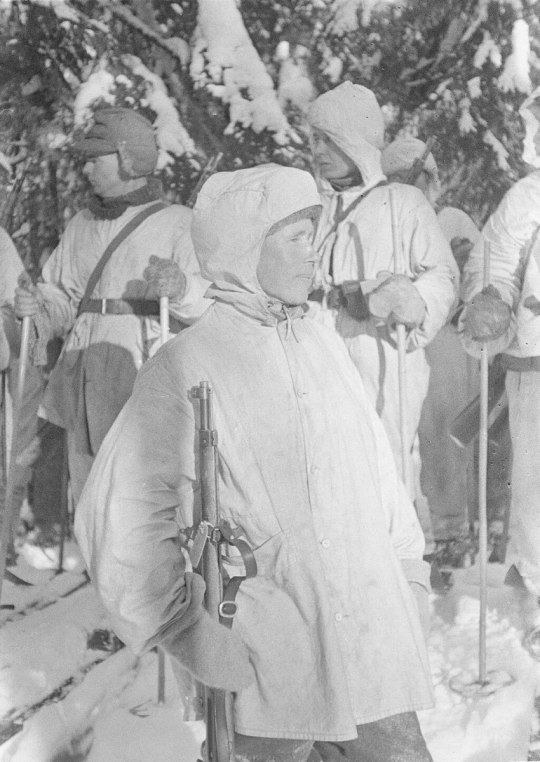
View On WordPress
#Joseph Stalin#Russia#Russia invades Finland#The Baltic States#The Russo-Finnish War of 1939-1940#The Winter War#Timoshenko
1 note
·
View note
Text

German troops of the 20th Panzer Division pass underneath a gate with portraits of Joseph Stalin and Marshal Semyon Timoshenko - exact location unknown 1941
25 notes
·
View notes
Text
Hanukkah and civil religion: England, 1942
For good or ill, Hanukkah lends itself to displays of civil religion. (Here in the United States we now routinely see giant Hanukkah menorot being lit on public land — every bit as much a violation of the First Amendment as Christmas being a federal holiday.) The urge to do this sort of thing must have been irresistible in wartime.
Here's an account from the Middlesex Independent & West London Star for December 12th:
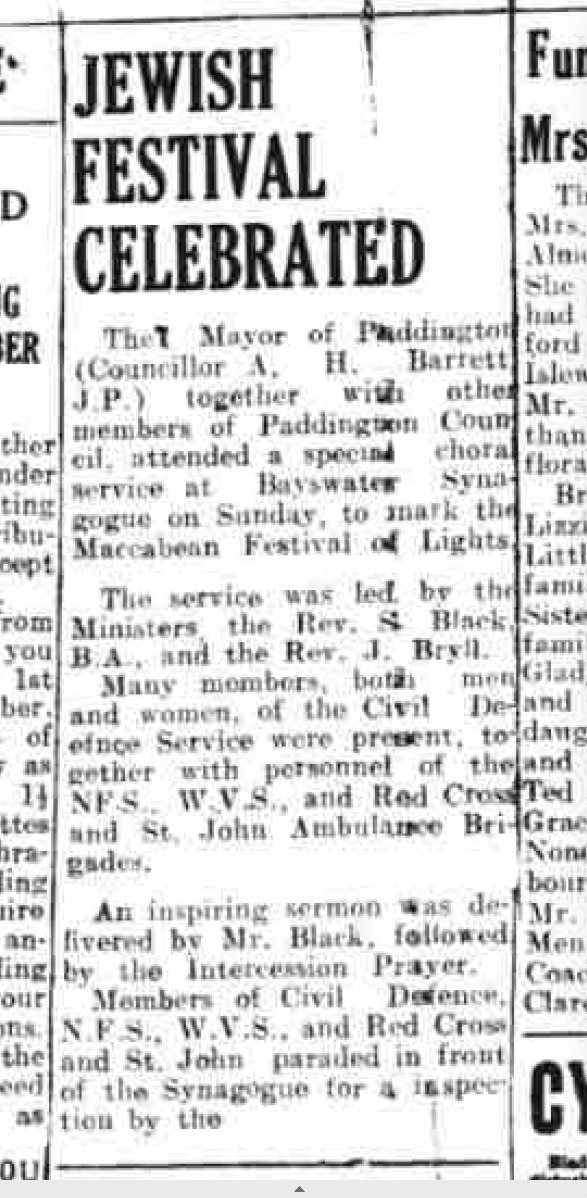
And here are an advance notice and reportage about a service in Nottingham, from the Nottingham Journal, December 3rd and 7th:
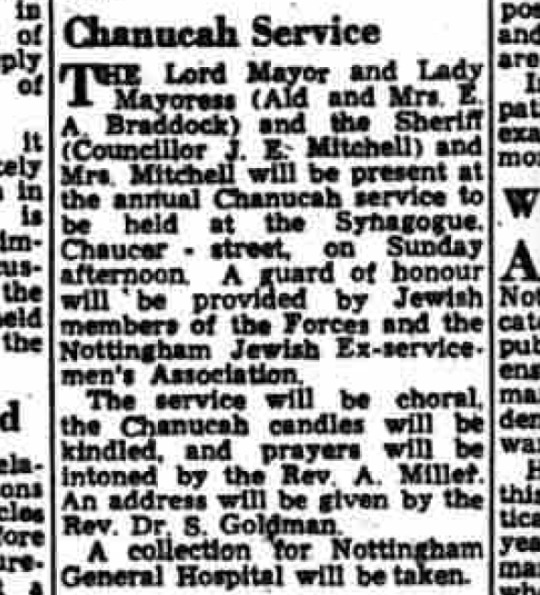
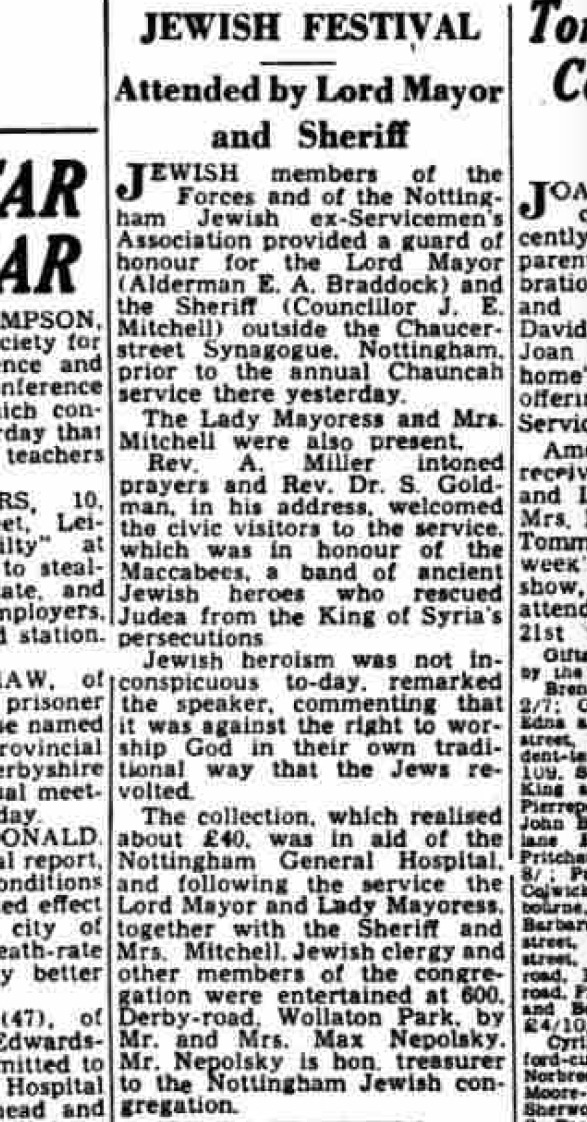
One thing that I do find exciting about these events is the possibility that some of the guests were being exposed to Jewish life for the first time. On the other hand, I've been surprised by the number of Jewish Lords Mayor, Councillors, and other officials that I've come across in researching my holiday posts. In 1942, the Lord Mayor of Hull was one Joseph Leopold Schultz, and on December 7th the Hull Daily Mail carried a lengthy account of a service, followed by refreshments, that he and other public servants attended:
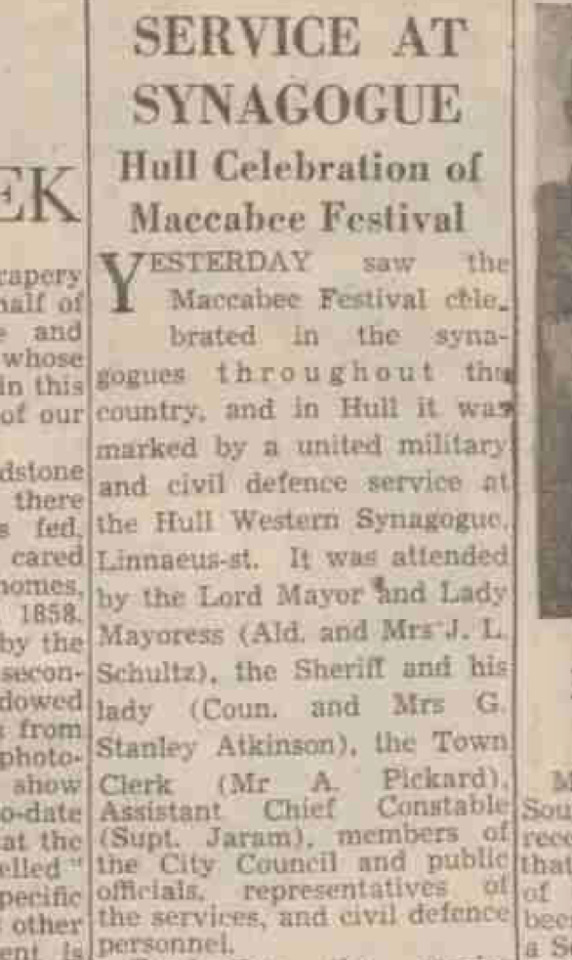
The story's single-column format makes it difficult to include the whole thing here. (It's available in the British Newspaper Archive, and is on page 3 of the issue in question, if you want to see it.) It ends with a fascinating piece of cognitive dissonance:
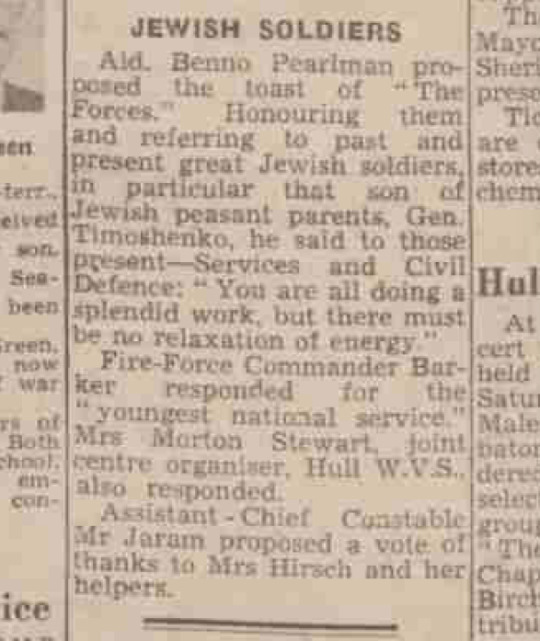
This is definitely the first time that I've come across any reference to Semyon Konstantinovich Timoshenko having been Jewish, and I strongly suspect that it's a complete howler; in the event that it was true, then it was probably something of which he had absolutely no consciousness. (The use of the phrase "Jewish peasant" in this context is actually funny: the Russian word for peasant is khrestianin.) If politics makes strange bedfellows, war makes stranger ones.
(All images above are ©The British Library Board. All Rights Reserved.)
And here's a round-up from The Jewish Chronicle's December 11th issue:
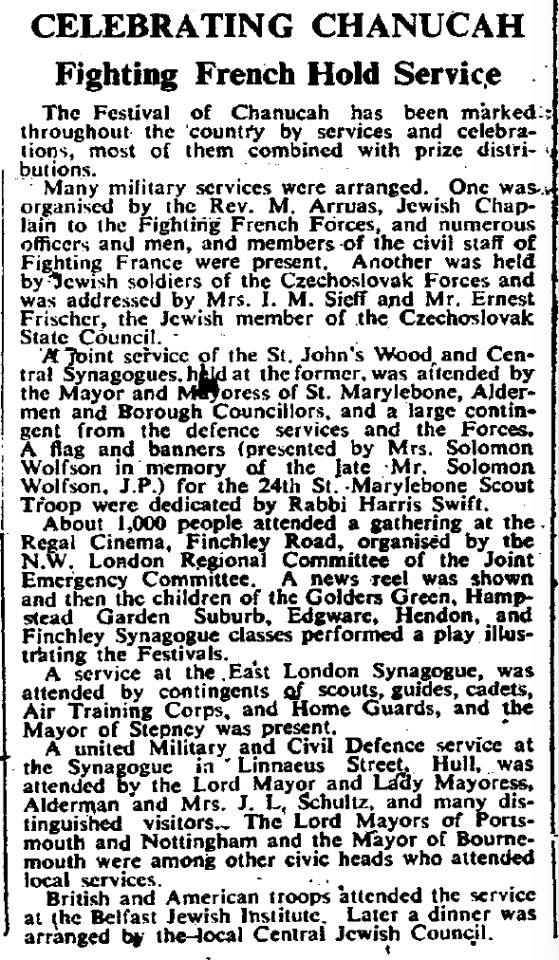
4 notes
·
View notes
Photo
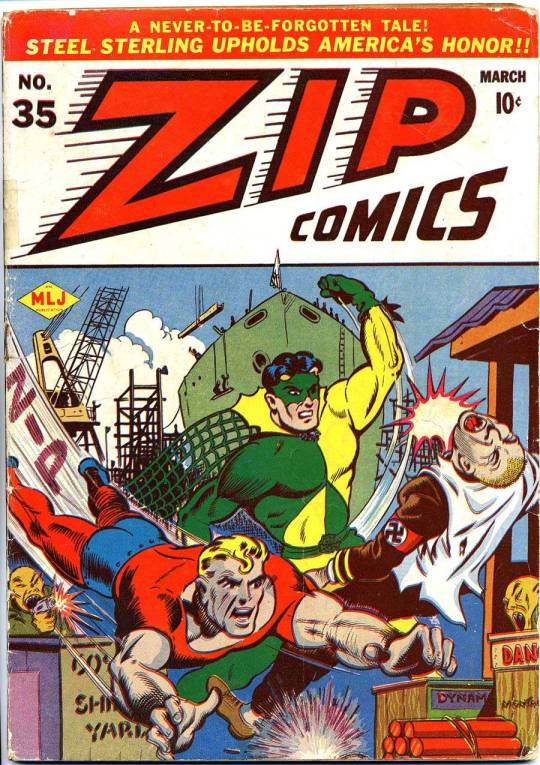
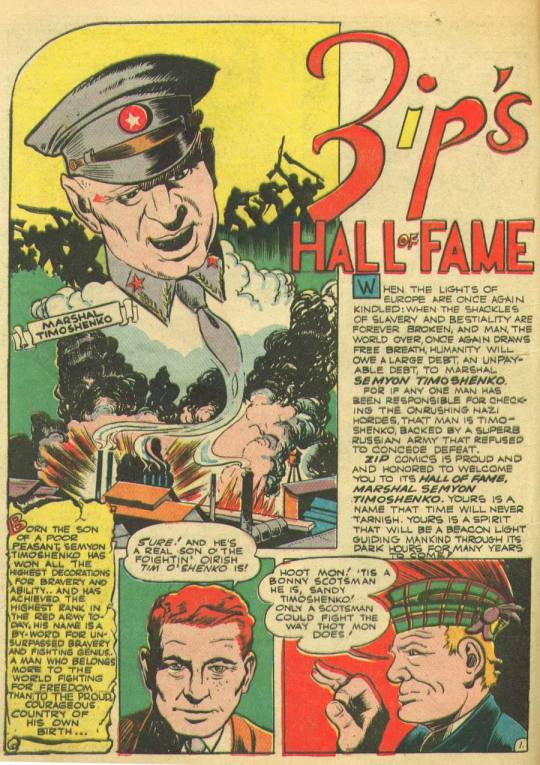
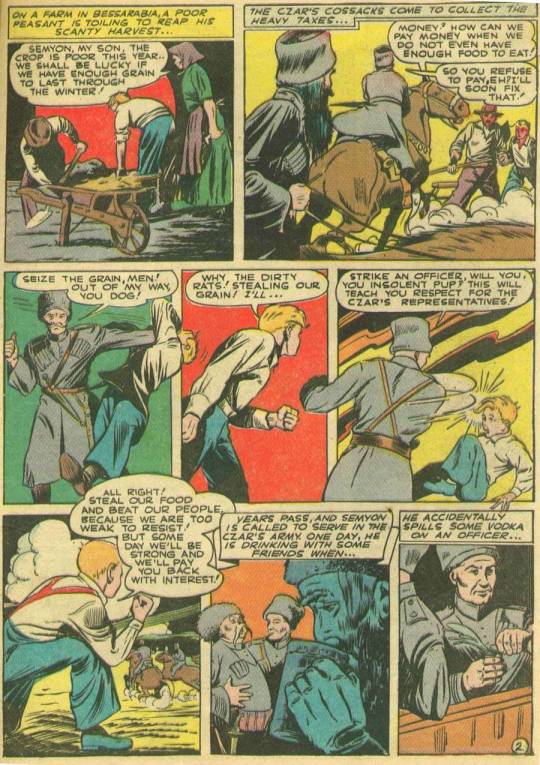

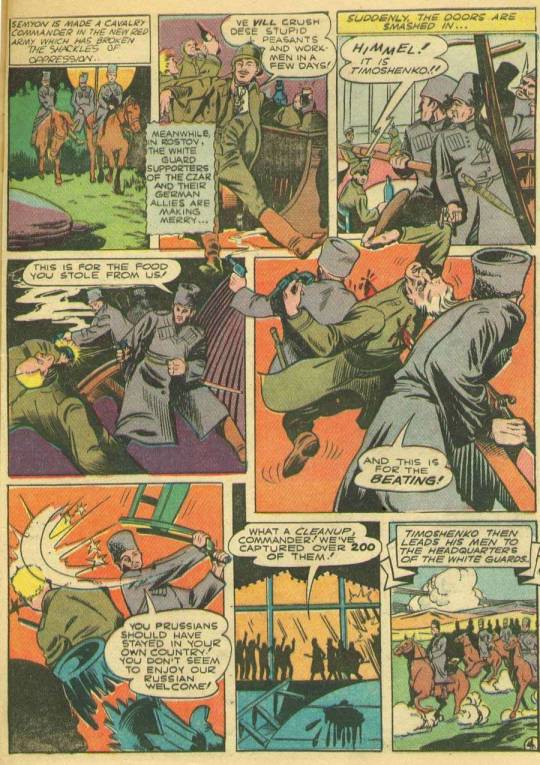
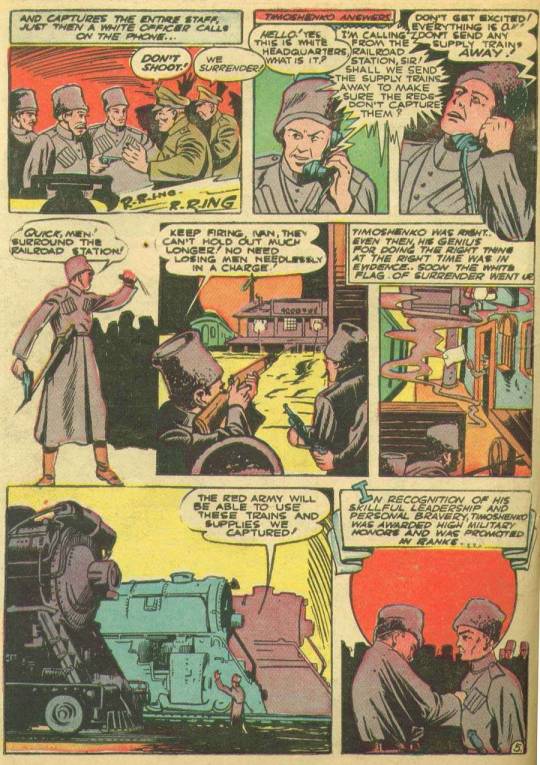

Semyon Timoshenko (ZIP #35) Unknown (LAST ZAMBINI & BLACK JACK)
1 note
·
View note
Photo
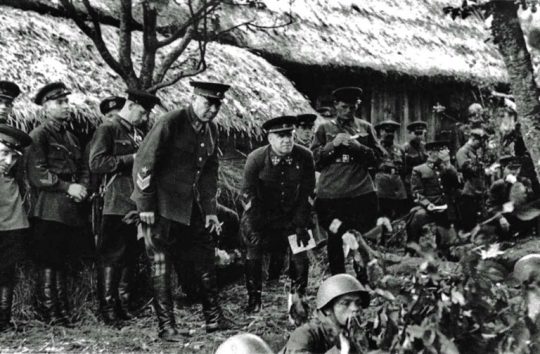
Semyon Timoshenko and Georgy Zhukov, the Soviet generals
4 notes
·
View notes
Text
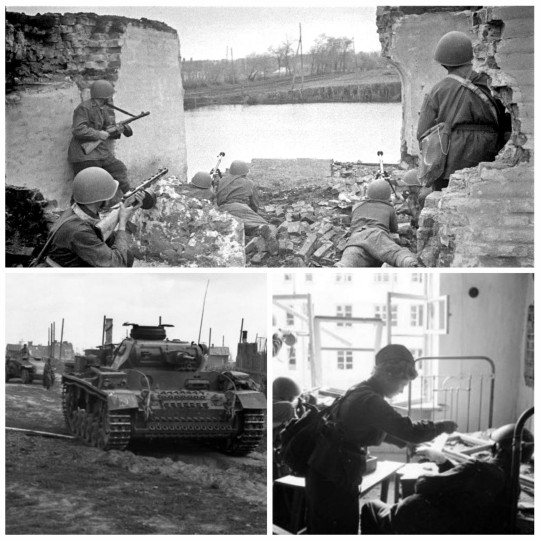
• Battle of Voronezh (1942)
The Battle of Voronezh, or First Battle of Voronezh, was a battle on the Eastern Front of World War II, fought in and around the strategically important city of Voronezh on the Don river, 450 km (280 mi) south of Moscow, from June 28th-July 24th, 1942.
The German attack had two objectives. One was to seed confusion about the ultimate goals of the overall campaign. There was widespread feeling by almost all observers, especially Soviet high command, that the Germans would reopen their attack on Moscow that summer. By strongly attacking toward Voronezh, near the site of the German's deepest penetration the year before during the German advance to Moscow in 1941, it would hide the nature of the real action taking place far to the south. Soviet forces sent to the area to shore up the defenses would not be able to move with the same speed as the Germans, who would then turn south and leave them behind. The other purpose was to provide an easily defended front line along the river, providing a strong left flank that could be protected with relatively light forces.
The plan involved forces of Army Group South, at this time far north of their ultimate area of responsibility. The attack would be spearheaded by the 4th Panzer Army under the command of General Hermann Hoth. Hoth's highly mobile forces would move rapidly eastward to Voronezh and then turn southeast to follow the Don to Stalingrad. As the 4th moved out of the city, the slower infantry forces of the Second Army following behind them would take up defensive positions along the river. The plan called for the 2nd to arrive just as the 4th had cleared the city, and Hoth was under orders to avoid any street-to-street fighting that might bog down their progress. The city was defended by the troops of the 40th Army as part of the Valuiki-Rossosh Defensive Operation of General of Army Nikolai Fyodorovich Vatutin's Southwestern Front. Hoth's powerful armored forces moved forward with little delay and the only natural barrier before the city was the Devitsa River, an arm of the Don running through Semiluki, a short distance to the west. For reasons that are unclear, the bridge over the Devitsa was not destroyed, and Hoth's forces were able to sweep aside the defensive forces placed there and reach the outskirts of Voronezh on July 7th. Soviet forces then mounted a successful counterattack that tied up Hoth's forces. At this point they should have been relieved by the infantry forces, but they were still far from the city. Intense house-to-house fighting broke out, and Hoth continued to push forward while he waited. At one point the 3rd Motorized Division broke across the Don, but turned back. The Soviet command poured reserves into the city and a situation not unlike what would be seen at Stalingrad a few months later broke out, with the German troops clearing the city street by street with flamethrowers.
The 2nd did not arrive for another two days, by which time the 4th was heavily engaged and took some time to remove from the line. The 2nd continued the battle until July 24th, when the final Soviet forces west of the Don were defeated and the fighting ended. Adolf Hitler later came to believe that these two days, when combined with other avoidable delays on the drive south, allowed Marshal Semyon Timoshenko to reinforce the forces in Stalingrad before the 4th Panzer Army could arrive to allow taking of Stalingrad. The Soviet forces recaptured the city in the Second Battle of Voronezh in 1943.
#second world war#world war 2#world war ii#ww2#soviet union#soviet#soviet history#german history#eastern front#military history
21 notes
·
View notes
Photo
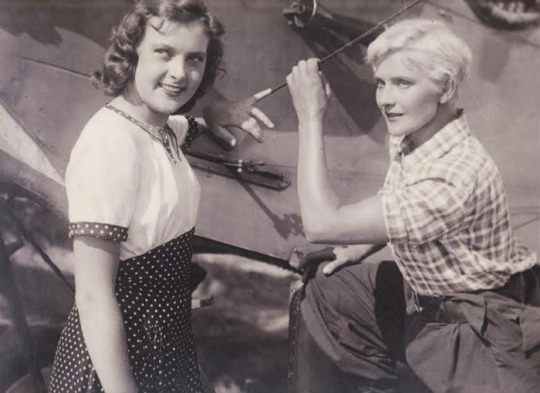
“Heavenly Slug”, dir. Semyon Timoshenko (1945)
#1940s#soviet cinema#soviet union#soviet#ussr#russia#history#photography#vintage#retro#black and white
106 notes
·
View notes
Photo

Future Marshals of the Soviet Union Kliment Voroshilov, Semyon Budyonny and Semyon Timoshenko (left to right) in Tsaritsyn (future Stalingrad) c. 1918. [1920 x 1264] via /r/HistoryPorn https://ift.tt/3cAMgpU
2 notes
·
View notes
Text
RS Notícias: Invasão soviética da Polônia - História virtual
RS Notícias: Invasão soviética da Polônia – História virtual
Invasão soviética da Polónia
Invasão Soviética da Polónia
Avanço da URSS e da Alemanha Nazista sobre a Polônia.
Data
17 de setembro a 6 de outubro de 1939
Local
Polónia
Desfecho
Vitória Soviética
Situação
Terminado
Beligerantes
Polónia
União Soviética
Comandantes
Edward Rydz-Śmigły
Mikhail Kovalov
(Frente Militar Bielorrussa)
Semyon Timoshenko
(Frente Militar…

View On WordPress
0 notes
Text
Events 5.12
254 – Pope Stephen I takes office, and takes a stand against Novatianism.
907 – Zhu Wen forces Emperor Ai into abdicating, ending the Tang dynasty after nearly three hundred years of rule.
1191 – Richard I of England marries Berengaria of Navarre in Cyprus; she is crowned Queen consort of England the same day.
1328 – Antipope Nicholas V, a claimant to the papacy, is consecrated in Rome by the Bishop of Venice.
1364 – Jagiellonian University, the oldest university in Poland, is founded in Kraków.
1510 – The Prince of Anhua rebellion begins when Zhu Zhifan kills all the officials invited to a banquet and declares his intent on ousting the powerful Ming dynasty eunuch Liu Jin during the reign of the Zhengde Emperor.
1551 – National University of San Marcos, the oldest university in the Americas, is founded in Lima, Peru.
1588 – French Wars of Religion: Henry III of France flees Paris after Henry I, Duke of Guise, enters the city and a spontaneous uprising occurs.
1593 – London playwright Thomas Kyd is arrested and tortured by the Privy Council for libel.
1743 – Maria Theresa of Austria is crowned Queen of Bohemia after defeating her rival, Charles VII, Holy Roman Emperor.
1778 – Heinrich XI, count of the Principality of Reuss-Greiz, is elevated to Prince by Joseph II, Holy Roman Emperor.
1780 – American Revolutionary War: In the largest defeat of the Continental Army, Charleston, South Carolina is taken by British forces.
1797 – War of the First Coalition: Napoleon I of France conquers Venice.
1821 – The first major battle of the Greek War of Independence against the Turks is fought in Valtetsi.
1846 – The Donner Party of pioneers departs Independence, Missouri for California, on what will become a year-long journey of hardship and cannibalism.
1862 – American Civil War: U.S. federal troops occupy Baton Rouge, Louisiana.
1863 – American Civil War: Battle of Raymond: Two divisions of James B. McPherson's XVII Corps turn the left wing of Confederate General John C. Pemberton's defensive line on Fourteen Mile Creek, opening up the interior of Mississippi to the Union Army during the Vicksburg Campaign.
1864 – American Civil War: The Battle of Spotsylvania Court House: Union troops assault a Confederate salient known as the "Mule Shoe", with the fiercest fighting of the war, much of it hand-to-hand combat, occurring at "the Bloody Angle" on the northwest.
1865 – American Civil War: The Battle of Palmito Ranch: The first day of the last major land action to take place during the Civil War, resulting in a Confederate victory.
1870 – The Manitoba Act is given the Royal Assent, paving the way for Manitoba to become a province of Canada on July 15.
1881 – In North Africa, Tunisia becomes a French protectorate.
1885 – North-West Rebellion: The four-day Battle of Batoche, pitting rebel Métis against the Canadian government, comes to an end with a decisive rebel defeat.
1888 – In Southeast Asia, the North Borneo Chartered Company's territories become the British protectorate of North Borneo.
1926 – The Italian-built airship Norge becomes the first vessel to fly over the North Pole.
1932 – Ten weeks after his abduction, Charles Jr., the infant son of Charles Lindbergh, is found dead near Hopewell, New Jersey, just a few miles from the Lindberghs' home.
1933 – The Agricultural Adjustment Act, which restricts agricultural production through government purchase of livestock for slaughter and paying subsidies to farmers when they remove land from planting, is signed into law by President Franklin D. Roosevelt.
1937 – The Duke and Duchess of York are crowned as King George VI and Queen Elizabeth of the United Kingdom of Great Britain and Northern Ireland in Westminster Abbey.
1941 – Konrad Zuse presents the Z3, the world's first working programmable, fully automatic computer, in Berlin.
1942 – World War II: Second Battle of Kharkov: In eastern Ukraine, Red Army forces under Marshal Semyon Timoshenko launch a major offensive from the Izium bridgehead, only to be encircled and destroyed by the troops of Army Group South two weeks later.
1942 – World War II: The U.S. tanker SS Virginia is torpedoed in the mouth of the Mississippi River by the German submarine U-507.
1948 – Wilhelmina, Queen regnant of the Kingdom of the Netherlands, cedes the throne.
1949 – Cold War: The Soviet Union lifts its blockade of Berlin.
1965 – The Soviet spacecraft Luna 5 crashes on the Moon.
1968 – Vietnam War: North Vietnamese and Viet Cong forces attack Australian troops defending Fire Support Base Coral.
1978 – In Zaire, rebels occupy the city of Kolwezi, the mining center of the province of Shaba (now known as Katanga); the local government asks the US, France and Belgium to restore order.
1982 – During a procession outside the shrine of the Virgin Mary in Fátima, Portugal, security guards overpower Juan María Fernández y Krohn before he can attack Pope John Paul II with a bayonet.
1989 – The San Bernardino train disaster kills four people, only to be followed a week later by an underground gasoline pipeline explosion, which kills two more people.
1998 – Four students are shot at Trisakti University, leading to widespread riots and the fall of Suharto.
2002 – Former US President Jimmy Carter arrives in Cuba for a five-day visit with Fidel Castro, becoming the first President of the United States, in or out of office, to visit the island since Castro's 1959 revolution.
2003 – The Riyadh compound bombings, carried out by al-Qaeda, kill 26 people.
2006 – Mass unrest by the Primeiro Comando da Capital begins in São Paulo (Brazil), leaving at least 150 dead.
2006 – Iranian Azeris interpret a cartoon published in an Iranian magazine as insulting, resulting in massive riots throughout the country.
2008 – An earthquake (measuring around 8.0 magnitude) occurs in Sichuan, China, killing over 69,000 people.
2008 – U.S. Immigration and Customs Enforcement conducts the largest-ever raid of a workplace in Postville, Iowa, arresting nearly 400 immigrants for identity theft and document fraud.
2010 – Afriqiyah Airways Flight 771 crashes on final approach to Tripoli International Airport in Tripoli, Libya, killing 103 out of the 104 people on board.
2015 – A train derailment in Philadelphia kills eight people and injures more than 200.
2015 – Massive Nepal earthquake kills 218 people and injures more than 3500.
2017 – The WannaCry ransomware attack impacts over 400,000 computers worldwide, targeting computers of the United Kingdom's National Health Services and Telefónica computers.
2018 – Paris knife attack: A man was fatally shot by police in Paris after killing one and injuring several others.
0 notes
Text
While still perceived as powerful, how did Nazi Germany loose WW2?
and how does Communism play a key role in the downfall of Nazi Germany?
On August 23, 1939–shortly before World War II (1939-45) broke out in Europe–enemies Nazi Germany and the Soviet Union surprised the world by signing the German-Soviet Nonaggression Pact, in which the two countries agreed to take no military action against each other for the next 10 years. With Europe on the brink of another major war, Soviet leader Joseph Stalin (1879-1953) viewed the pact as a way to keep his nation on peaceful terms with Germany, while giving him time to build up the Soviet military. German chancellor Adolf Hitler (1889-1945) used the pact to make sure Germany was able to invade Poland unopposed. The pact also contained a secret agreement in which the Soviets and Germans agreed how they would later divide up Eastern Europe. The German-Soviet Nonaggression Pact fell apart in June 1941, when Nazi forces invaded the Soviet Union. (https://www.history.com/topics/world-war-ii/german-soviet-nonaggression-pact)
The public part of the Moscow agreement was announced with great fanfare on August 25, 1939, the day Hitler had planned to launch his “blitzkrieg” (quick, surprise attacks) strike east into Poland. Earlier this same day, however, Great Britain and France, knowing the Nazi-Soviet agreement was pending, reacted by formalising their pledge to Poland in a treaty declaring each would fight in Poland’s defence if it were attacked.
Hitler was incensed by this counter-thrust but quickly cancelled his order for the invasion. Then, in a wild gamble that France and Great Britain would not meet their treaty obligations to Poland, and knowing he had nothing to fear from the Soviet army, Hitler ordered his troops to strike east into Poland on September 1, 1939. Two days later, on September 3, France and Great Britain declared war on Germany. World War II had begun. And less than two years after that, Hitler scrapped his pact with Stalin and sent some 3 million Nazi soldiers pouring into the Soviet Union on June 22, 1941.
Battle of Stalingrad, (July 17, 1942–February 2, 1943), successful Soviet defence of the city of Stalingrad (now Volgograd), Russia, U.S.S.R., during World War II. Russians consider it to be one of the greatest battles of their Great Patriotic War, and most historians consider it to be the greatest battle of the entire conflict. It stopped the German advance into the Soviet Union and marked the turning of the tide of war in favour of the Allies (https://www.britannica.com/event/Battle-of-Stalingrad)
Hitler’s goal was to eliminate Soviet forces in the south, secure the region’s economic resources, and then wheel his armies either north to Moscow or south to conquer the remainder of the Caucasus. On July 9, 1942 Hitler altered his original plan and ordered the simultaneous capture of both Stalingrad and the Caucasus.
Stalin and the Soviet high command responded to the summer offensive by forming the Stalingrad Front with the Sixty-second, Sixty-third, and Sixty-fourth Armies, under Marshal Semyon Timoshenko. While the initial Soviet response was to maintain an orderly withdrawal and thus avoid the massive encirclements and troop losses that had characterised the early months of Operation Barbarossa, on July 28 Stalin issued Order No. 227, decreeing that the defenders at Stalingrad would take “Not One Step Back.” He also refused the evacuation of any civilians, stating that the army would fight harder knowing that they were defending residents of the city.
The turning point of the battle came with a huge Soviet counteroffensive, code-named Operation Uranus (November 19–23). With winter setting in and food and medical supplies dwindling, Nazi forces grew weaker. Hitler declared that the Sixth Army would be supplied by the Luftwaffe, but the air convoys could deliver only a fraction of the necessary supplies.
In mid-December Hitler ordered one of the most-talented German commanders, Field Marshal Erich von Manstein, to form a special army corps to rescue Paulus’s forces by fighting its way eastward (Operation Winter Tempest), but Hitler refused to let Paulus fight his way westward at the same time in order to link up with Manstein. That fatal decision doomed Paulus’s forces, since Manstein’s forces then simply lacked the reserves needed to break through the Soviet encirclement single-handedly.
On January 31 Paulus disobeyed Hitler and agreed to give himself up. Twenty-two generals surrendered with him, and on February 2 the last of 91,000 frozen starving men surrendered to the Soviets.
On the Soviet side, official Russian military historians estimate that there were 1,100,000 Red Army dead, wounded, missing, or captured in the campaign to defend the city. An estimated 40,000 civilians died as well.
0 notes
Photo

Marshal Semyon Timoshenko and other senior commanders of the Red Army
2 notes
·
View notes